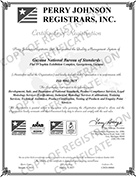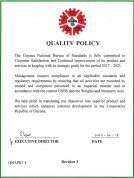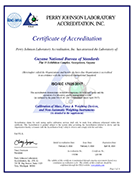As we continue to observe Amerindian heritage month September 2021, under the theme: “Maintaining our traditional integrity, celebrating our cultural identity,” the Guyana National Bureau of Standards (GNBS) continue to promote the standards which can have a lasting impact on the quality of products made by those in our indigenous communities.
For many of these communities, furniture making is one of the common activities, which helps to sustain the livelihood of many Amerindians. These products, crafted from bamboo, rattan, wicker and nibbi plant materials, are often in demand locally and internationally due to their uniqueness and ties to nature. To guide the production of quality indigenous furniture, a national standard is available.
The National Standard Specification for Indigenous furniture (bamboo, rattan, wicker and nibbi) (GYS 509: 2013) was adopted by the GNBS in 2013 from the Caricom Regional Organisation for Standard and Quality (CROSQ). The standard addresses many aspects of indigenous furniture production, including those related to materials, construction and finishing.
Materials listed in the standard are either flexible for weaving and binding, or sturdy for the ends of various pieces of furniture. The document requires that materials selected for furniture-making be characterised by lightness, flexibility, durability, smoothness. The standard also specifies that the materials must have no loose hair-like strands.
For example, Rattan poles, which are defined as a long, tough and slender stem from the genera Calamus and Daemonoropus of the family of Palmae, must be of good grade, mature, clean, scraped and thoroughly seasoned. In addition, the standard specifies that they shall be treated against fungi and insect infestations, and be free from mineral and fungal blemishes, scars, bruises and especially pinholes.
Importantly, no nails or metals should be used in the crafting of the furniture. Instead, it is stated that main parts and stress joints shall be secured by binding, wrapping or applying wooden or bamboo bolts and screws.
Regarding construction, the GYS 509: 2013 specifies that all furniture complying with this standard shall be of good workmanship while all completed pieces must be of uniform quality, clean and free from any defects that may affect its appearance or use.
Meanwhile, for finishing, the standard requires that all surfaces be sanded smooth and all exposed edges and corners eased to avoid injuries during use. Furniture shall be covered with materials such as lacquer, wax, oil and polyester. This significantly enhances the appearance of the various pieces.
Sampling, performance tests, labelling and inspection are other aspects addressed in the standard. Prominent labels shall be securely affixed to the furniture and shall include information such as common name or types of furniture, manufacturer code or mark, country of origin and types of materials used in the manufacture.
It is anticipated that this standard will benefit manufacturers by the harmonization of requirements for the manufacture of various types of furniture, suitable for both domestic and commercial use. Further, given that it was adopted from CARICOM, conformance to the requirements will definitely assist persons who are looking to export their products to other Caribbean countries.
To purchase a copy of this or any other standard, persons can call 219-0064/65/66 and request it from the Standardisation Department. A visit to the GNBS’ website will also grant access to our Standards Portal where you can read the scope of available standards and determine which best suits your needs.





